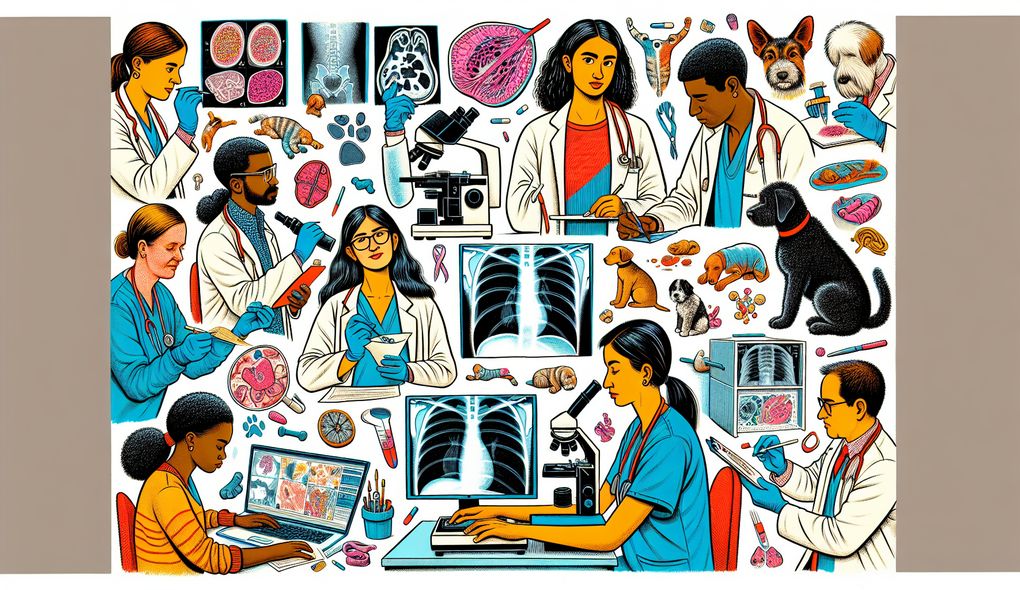How do you perform necropsies to understand causes of death?
SENIOR LEVEL

Sample answer to the question:
When performing necropsies to understand causes of death, I follow a systematic approach. Firstly, I carefully examine the external body of the animal, noting any abnormalities or injuries. Then, I proceed to open the body and examine the internal organs, paying close attention to their appearance, color, and texture. I collect samples of tissues for further analysis. These samples are processed, stained, and examined under a microscope to identify any cellular changes or abnormalities. Based on my findings, I can determine the cause of death and any underlying diseases or injuries. I document my observations in detailed reports to ensure accurate record-keeping and communication with other veterinarians and researchers.
Here is a more solid answer:
Performing necropsies requires a methodical and systematic approach. Firstly, I meticulously examine the external body for any injuries, parasites, or other abnormalities. Then, I proceed to carefully open the body and examine each organ, noting any changes in appearance, color, or texture. I collect representative samples of tissues for histopathological examination. These samples are processed, embedded in paraffin, sliced into thin sections, stained, and examined under a microscope. This detailed analysis allows me to identify cellular changes, lesions, or abnormalities indicative of disease or injury. I interpret the findings, correlate them with clinical history, and determine the cause of death. I am proficient in the interpretation of histopathological findings and have a deep understanding of the underlying pathophysiology. I document my observations and diagnoses accurately in detailed reports, ensuring effective communication with other veterinarians and researchers involved in the case.
Why is this a more solid answer?
The solid answer provides a more detailed and comprehensive explanation of how the candidate performs necropsies. It demonstrates their expertise in diagnostic and analytical skills, technical knowledge of histopathology, and ability to communicate effectively with others. However, it can still be improved by providing specific examples or cases where the candidate has applied their skills and knowledge in performing necropsies.
An example of a exceptional answer:
Performing necropsies is a crucial part of understanding the causes of death in animals. To ensure accurate diagnoses, I follow a rigorous and systematic approach. Before starting the necropsy, I review the animal's medical history and any available clinical data to provide contextual information. During the necropsy, I conduct a thorough external examination, looking for signs of trauma, lesions, or infections. I then proceed to open the body and carefully examine each organ, noting any macroscopic abnormalities. To gather representative tissue samples, I use proper techniques such as aseptic sampling, avoiding contamination. These samples are processed, embedded, sectioned, stained, and examined under the microscope. I have extensive experience in histopathology and cytology, allowing me to accurately interpret cellular changes and identify the underlying disease processes. I actively collaborate with other veterinarians and specialists, discussing complex cases and seeking additional expertise when needed. I regularly attend conferences, read scientific literature, and participate in continuing education to stay updated with the latest advancements in the field. My passion for research has led me to publish findings in scientific journals, contributing to the knowledge of animal diseases. Overall, my approach to necropsies combines technical expertise, attention to detail, and a commitment to ongoing learning and collaboration.
Why is this an exceptional answer?
The exceptional answer provides a comprehensive and detailed explanation of the candidate's approach to performing necropsies. It showcases their expertise in diagnostic skills, analytical skills, technical knowledge of histopathology and cytology, and their dedication to ongoing learning and collaboration. The candidate also highlights their experience in research and publishing findings in scientific journals, demonstrating their commitment to advancing veterinary sciences. The answer could be further improved by providing specific examples of complex cases or research projects the candidate has been involved in.
How to prepare for this question:
- Review and enhance your knowledge of veterinary pathology, including histopathology and cytology.
- Stay updated with current research and advancements in the field of veterinary pathology.
- Practice describing your approach to performing necropsies, highlighting your diagnostic and analytical skills.
- Prepare examples of complex cases or research projects you have been involved in where the necropsies played a crucial role.
- Develop your communication skills to effectively convey your findings and collaborate with other veterinarians and researchers.
What are interviewers evaluating with this question?
- Diagnostic skills
- Analytical skills
- Technical knowledge
- Communication skills

